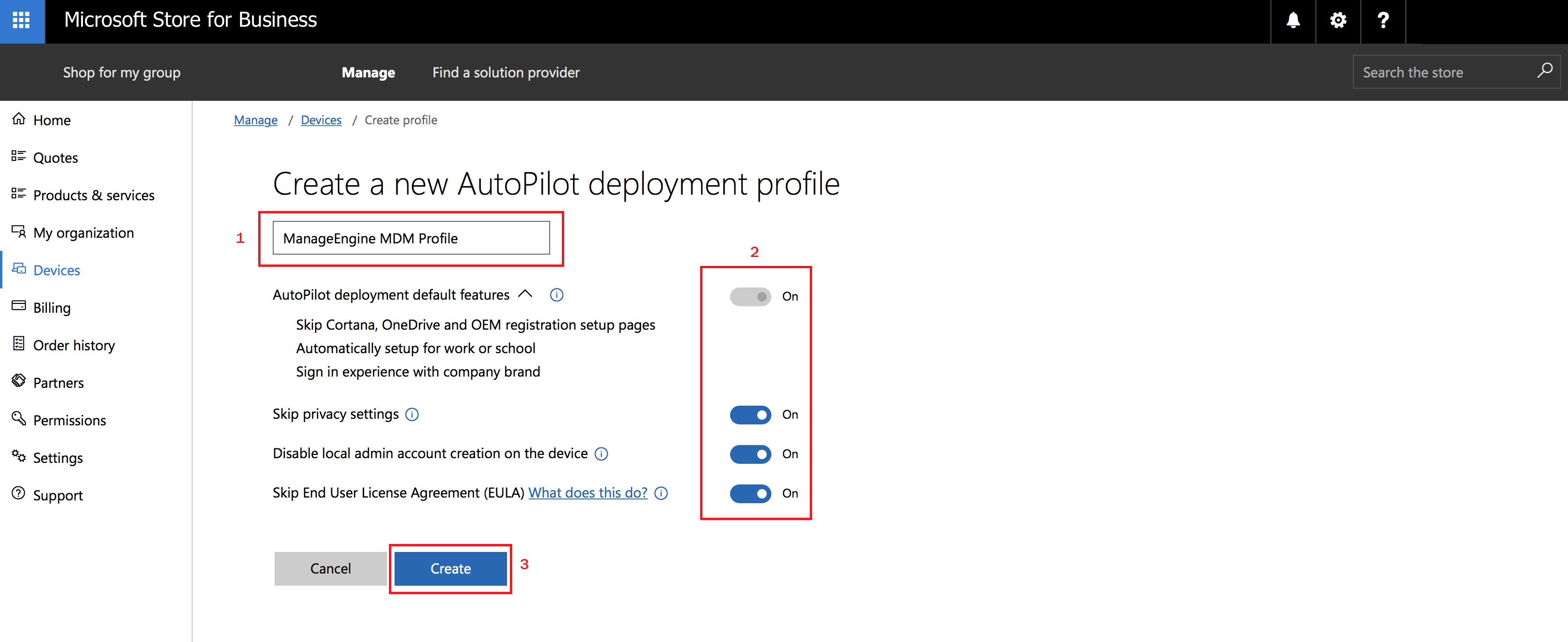Windows Autopilot is a set of Microsoft Windows programs that help simplify and streamline the bulk deployment, setup and configuration of new Windows 10 devices in organizations to ensure they're corporate ready. Windows Autopilot facilitates the easy management of Microsoft Windows devices throughout their entire lifecycles in an organization right from initial deployment to device retirement.
With a combination of a mobile device management (MDM) solution and Azure Active Directory (AD) organizations can ensure Windows devices are ready for corporate usage with zero admin intervention. With the help of MDM solutions which supports Microsoft Windows Autopilot, organizations can facilitate their employees to start using the Windows devices immediately upon activation by ensuring all the required apps, configurations and documents are available on these devices. Further, integrating Windows Autopilot with Entra ID(formerly Azure AD) allows organizations to automatically add devices to directory groups.
One of the major challenges IT admins face is deploying and provisioning the Windows 10 devices required by the organization's workforce. Windows Autopilot helps organizations simplify Windows 10 device management with:
A One-time setup: With Windows Autopilot, admins no longer need to manually deploy Windows 10 devices which involves activating the device, configuring device activation settings, creating user accounts, and deploying the necessary apps, profiles and configuration. Windows Autopilot enables organizations to automate the entire device activation and user assignment process with a one-time setup.
Automated deployment of corporate resources: By integrating the Windows Azure Autopilot portal with MDM solution, admins can ensure the apps and documents are also distributed to enrolled devices in bulk. This ensures the devices can be shipped directly to the employee without requiring any admin intervention.
Restrict administrator account creation: Using Windows Autopilot can help restrict the creation of local administrator accounts on devices, ensuring only the IT team has control over admin permissions on these devices.
In addition to the device OS being a supported Windows 10 version, ensure the following Windows Autopilot requirements are met to enroll devices using Microsoft Windows Autopilot:
Microsoft Azure, formerly known as Windows Azure, is a comprehensive public cloud computing platform introduced by Microsoft. It provides an extensive range of capabilities such as computing, networking, analytics, etc. One noteworthy feature of Windows Azure is that it integrates with various tools that support Windows Autopilot to simplify the management and deployment of mobile devices in the organization.
Leverage the various benefits offered by Windows Azure Autopilot by integrating it with a solution that supports Windows Autopilot. ManageEngine's Mobile Device Manager Plus, provides extensive support to Windows Autopilot's automation capabilities, by seamlessly integrating Windows Autopilot and MDM.
To automate bulk enrollment and deployment of Windows 10 devices using Windows Autopilot, follow the steps given below once the above mentioned Windows Autopilot requirements are met:
Step 1: On the Windows Business Store, navigate to Manage -> Devices and select Autopilot deployment
Step 2: Create a new Windows Autopilot deployment profile and by default users are allowed to skip the following steps while activating the device
Additionally, the following settings can be configured:

Step 3: Obtain the device details from your resellers, upload the CSV file containing the details and associate the Windows Autopilot deployment profile.
Step 4: The device will be enrolled and available on the Mobile Device Manager Plus server for user assignment
Refer this document for detailed steps on how to perform device enrollment using Windows Azure Autopilot.
Windows Azure Autopilot or Microsoft Azure deployment provides organizations the following benefits: